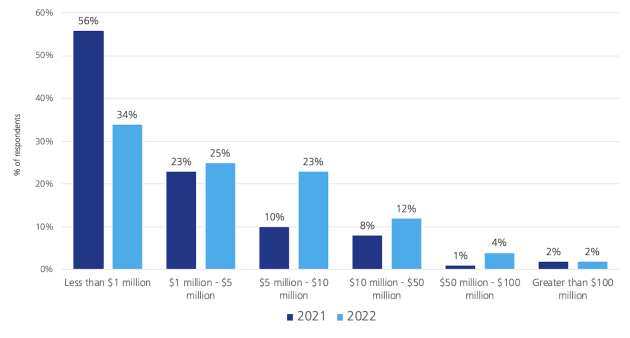
Investment in supply chain innovation to rise dramatically: report
Don Horne
Features industry ippt supply chainNearly 80 per cent of supply chain leaders say their digital transformation has accelerated due to the pandemic, according to an industry report released today by MHI in collaboration with Deloitte.
As a result, investment in supply innovation over the next two years is expected to rise dramatically, according to the 2022 MHI Annual Industry Report, Evolution to Revolution: Building the Supply Chains of Tomorrow.
“Supply chain leaders have never been in a better position to drive impactful and lasting change for the industry,” said John Paxton, CEO of MHI. “With the white-hot media spotlight chronicling the after-effects of the pandemic, the importance of supply chain is finally coming into focus in boardrooms across the world.”
The report provides new insights into trends and technologies that are transforming supply chains and the priorities of the people who run them.
You can download the entire report here: mhi.org/publications/report.
The report, the ninth in a series of annual industry reports published by MHI and Deloitte, provides updates on the innovative technologies that have the most potential to transform supply chains, including projected adoption rates of the next five years for each of the 11 categories of technology covered in the report and an analysis of common barriers to adoption.
Disruption Now Tops List of Supply Chain Challenges, Talent Shortage a Close Second
For the past nine years of the survey, hiring and retaining qualified workers was consistently the top supply chain challenge.
However, in this year’s survey supply chain disruptions and shortages rose to the top at 57 per cent – presumably due to the ongoing effects of the global pandemic. Talent issues (54 per cent) and customer demands (51 per cent) remain top challenges but must now be addressed in the context of avoiding future supply chain disruptions.

Comparison of investment estimates in supply chain innovations over the next two years. Chart courtesy of MHI.
This shortage is spurring companies to invest in technologies that not only improve agility and efficiency but also reduce the need for repetitive, manual labor. These investments create the kind of advanced technology environment that results in more rewarding supply chain jobs that appeal to today’s top talent.
This could provide a new path to upskilling current employees and attracting new talent – creating a more modern, capable workforce that can quickly adapt and adjust to changes in the technology and market landscape.
Company leaders understand at a theoretical level that their supply chains could greatly benefit from investing in innovation, but potential gains often take a back seat to short-term profit targets and concerns over the cost associated with new technology and the threat of disruption to day-to-day operations.
For the first time since the inception of the MHI Annual Industry Report, “lack of a clear business case to justify the investment” was cited as the leading barrier to adoption for all 11 technologies in the report.
Print this page